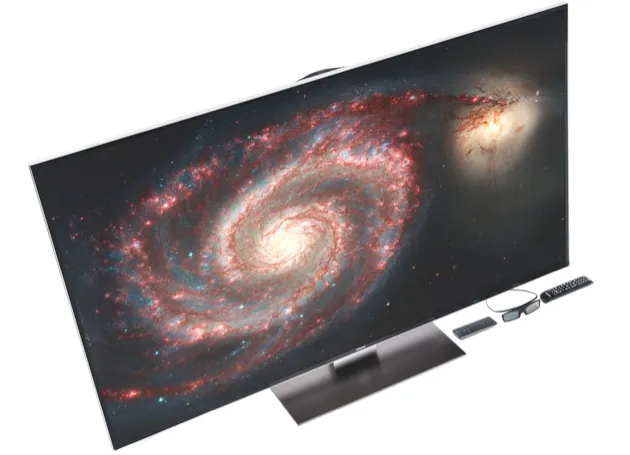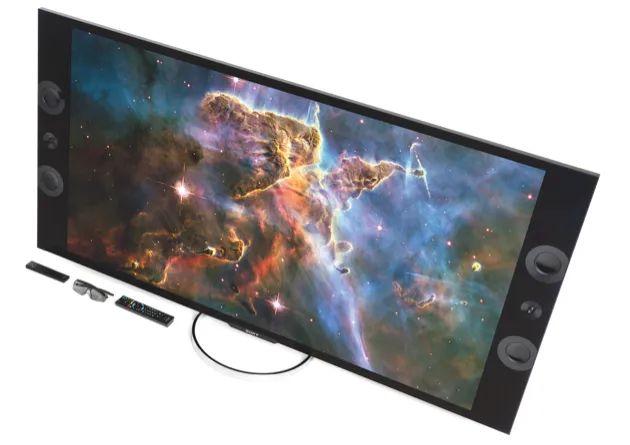What is Ultra HD?
It’s the next viewing standard in TV. In reality, Ultra HD is the name given to a display resolution: 3,840 x 2,160 pixels to be precise. Often referred to as 4K, this resolution has four times the number of pixels of the current HD (which is 1,920 x 1,080 pixels). More pixels means more detail and the jump in visual quality is instantly recognisable. The extra sharpness means that when watching a football match, for example, you can see divots in the pitch. And more importantly, you can judge the flight of the ball and the position of the players better than before.
Is my HD TV out of date then?
Not yet, thankfully. The UK terrestrial channels only went HD at the end of 2012, so it’s likely to be a while before they adopt another new broadcast format. Besides, broadcasters are still trying to work out how to send such a data-heavy format to your set. The difference between standard HD and Ultra HD won’t make you want to bin your old telly, but it’s worth considering if you want to future-proof your next purchase. That said, the smallest Ultra HD set available at the time of writing was a 55-inch model; it’s not clear yet how much difference you’ll see in smaller screens.
What can I watch if I buy one?
The first Ultra HD Blu-ray discs, and Blu-ray players, will go on sale this year. These new discs are likely to hold 300GB of data, 64 times the capacity of a DVD. As you’d expect, the first titles will be a mix of nature documentaries and blockbusters filmed with 4K cameras. Netflix and Lovefilm are rumoured to be working on streaming 4K content, though that will eat up lots of internet bandwidth. Ultra HD TV channels are unlikely to appear until 2015, but the current crop of Ultra HD TVs all offer upscaling – a clever algorithm that upgrades a HD source into a 4K one, though some are better than others at this.
Read on for reviews of Samsung and Sony 4K TV sets...
1
SAMSUNG UE65F9000
£4,999

Samsug's design is a little more subdued than Sony’s Ultra HD TV. The Korean company has focused instead on the visuals of its smart interface. The home menu is a live feed of what’s currently on TV and a pane of windows that show, at a glance, what you’re able to watch right now – whether it’s via media played off a USB stick, network attached storage or a streaming service like Netflix.
The interface is a little confusing at first, but the live thumbnails are more enticing than Sony’s menu system. The smart remote was so convenient to use, with its touch-sensitive trackpad, that extra features like gesture control – waving your hand to change a channel – and voice control were an added novelty wasted on us.
The only Ultra HD content available at the time of testing was some stock footage specifically filmed for shop window demos. These can be a little over-mastered, but there was no doubting the picture was astounding. A segment on cooking demonstrated that there was enough detail in the picture to see individual droplets of oil leaping out of a pan. The fast refresh rate also ensured that all this movement was captured in high fidelity. In fact, in terms of sharpness, the Samsung’s display surpasses Sony’s set. Colours jumped off the screen too and the blacks, which tend to suffer with LED TVs, were inky with lots of different tones.
Switching from 4K content to BBC One HD didn’t harm the picture quality too much, as the upscaling system worked well with only a few occasional artefacts created by the conversion process. In a clever move, the ports and ‘brains’ of the TV are held in an external box that connects via a HDMI cable. This means the set is future-proof: you simply update this ‘Evolution Kit’ to bring it in line with future standards.
The only serious negative is the TV’s speaker. Screens like this usually sound as thin as they look, and this one is no different. It’s a failing that most flatscreens are guilty of, but next to the Sony, it’s hard to overlook.
Rating: 4/5
2
SONY KD-65X9005A
£4,999

At just under 2m wide, this is a lot of TV. The extra width comes from the exposed speakers on either side that employ Sony’s Magnetic Fluid technology. It sounds space-age, but this tech ensures that a very thin pair of speakers make a big sound. Placed at the front, rather than behind the panel, as most flatscreen TVs do, these speakers provide a much more nuanced sound than you'd expect, so you won’t have to spend extra on a decent sound system.
With Sony filming this year’s World Cup in 4K, and as the co-creators of the Ultra HD Blu-ray, you can tell the company is serious about this new format. And it shows. I was provided with a ‘content generator’ stuffed with clips of nature documentaries, football matches and film trailers. The picture, as you’d expect of a TV with a £4,999 price tag, was sparkling.
The added layer of detail from the extra pixels brought the shimmering feathers of tropical birds to life in a way I’d never seen before. Football matches gained extra depth, almost like watching a game in 3D, and the screen’s ultra-fast refresh rate made all the action flawlessly smooth. A trailer for the Total Recall remake had the movie looking even better than it did at the cinema. The colour accuracy and range was simply unmatched by any TV I’ve seen before. Upscaling, where a smart algorithm converts lower resolutions into Ultra HD, worked well too. Though I wasn’t tricked into thinking I was watching 4K content, it did the job well without introducing any obvious visual errors.
Sony’s menu system is clean and clear. I had little difficulty navigating to the huge number of streaming services available, including essentials like Lovefilm, Netflix and iPlayer. Ultimately though, it’s not as smart, inviting or lively as Samsung’s offering.
My only concern at the time of writing is that it’s unclear how Sony will make this TV compatible with the new Ultra HD ports that the next generation of Blu-ray players will require. That said, Sony has promised that its customers won’t be left behind, and I’m inclined to believe them.
Rating: 5/5
This article first appeared in the February 2014 issue of BBC Focus Magazine.
Follow Science Focus onTwitter,Facebook, Instagramand Flipboard
